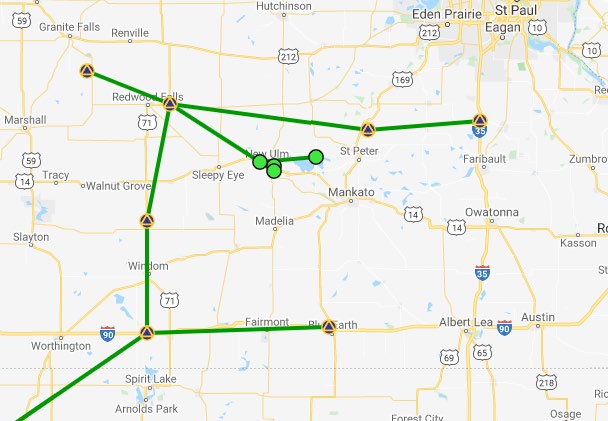10.2. Selecting the Session Network Design¶
The Network Design selection is identified at the bottom of the session processing page, and the expression of the design can be seen in the table listing the marks and CORSs (which are used as hubs, and which are constrained). There are three options available: “USER,” “CORS,” and “MST.”

Fig. 10.3 Example session processing page noting the one hub constrained 3D under “User” selected network design¶
USER: The default (and design recommended for submission to NGS) is “USER.” OP attempts to choose the best hub from the list of CORSs selected for the project. This is typically the closest and/or most centrally located CORS with respect to the user marks. If OP does not select a hub, or if the user disagrees with the hub selection, a new hub will have to be chosen manually. As mentioned in Section 9, certain larger projects may require multiple hubs if user marks are separated by 500 km or more. If multiple hubs are necessary, then each session’s hub must connect to all other hubs. In other words, each hub should be present in all sessions. Note that a hub can also be an active (non-CORS) station if it has 24-hour data files.

Fig. 10.4 Manage a mark’s data file pop-up window¶
Caution
For submission to NGS for publication, NGS recommends a “hub” design that keeps baselines to a maximum of 250 km in length. For most projects, that will mean selecting one hub. For larger area projects, multiple hubs might be necessary
CORS: The CORS Network Design strategy automatically selects all included CORS as hubs. Note that this is not an acceptable design for submission to NGS.

Fig. 10.5 Manage a mark’s data file pop-up window¶
MST: A Minimal Spanning Tree (MST) connects all the user marks and CORS together seeking the fewest and shortest possible unique baselines. All user marks and CORS are designated as hubs. Note that this is not an acceptable design for submission to NGS.

Fig. 10.6 Manage a mark’s data file pop-up window¶
Caution
For any selected design, there is a limit of 99 marks including CORSs/IGS stations per session